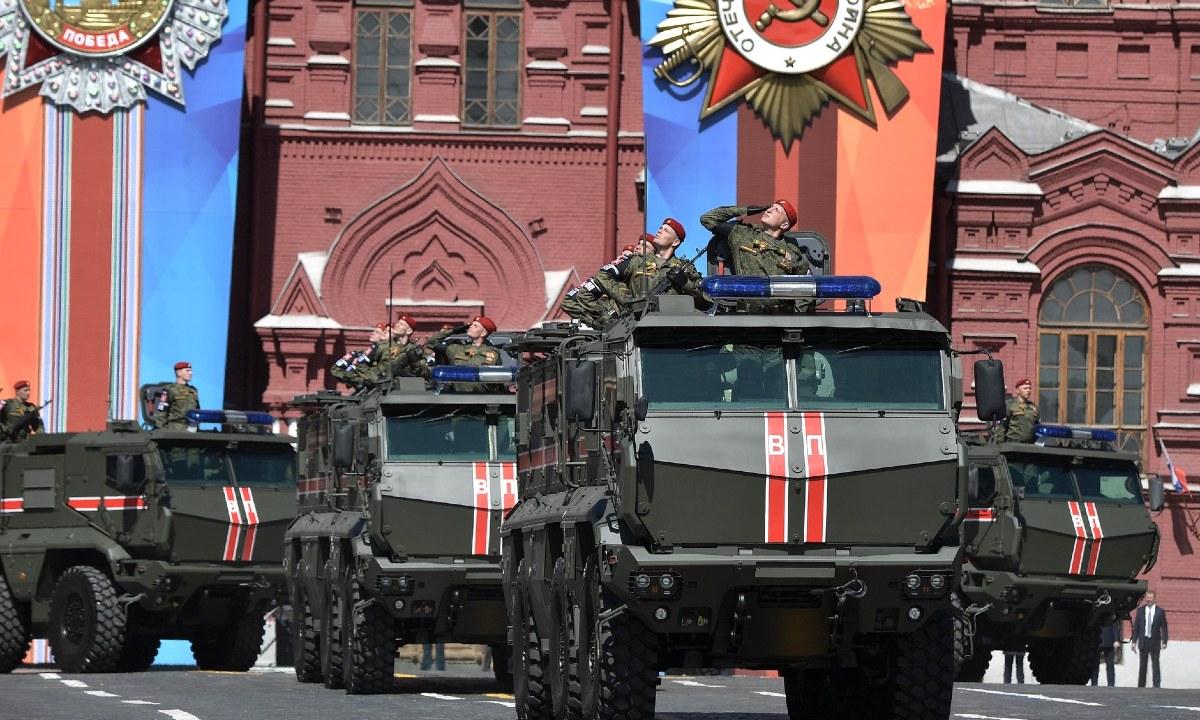
The True State of Russian Arms Manufacturing, June 2023
The True State of Russian Arms Manufacturing, June 2023
In recent weeks, Russia’s military leadership has wholly changed its rhetoric regarding domestic arms manufacturing and the country’s military-industrial complex. From the nervous statements and even threats made to the upper management of state-owned companies and production facilities throughout 2022 and during the first months of 2023, by June 2023, it appears that the Kremlin has become rather optimistic about the effectiveness and efficiency of its defense industry. Russian Prime Minister Mikhail Mishustin and Dmitry Medvedev, former president and now deputy chairman of the Russian Security Council, both declared that production within the military-industrial complex has increased “by many times” (Government.ru, May 31; Scrf.gov.ru, June 1). Later, Russian President Vladimir Putin supported these statements by offering allegedly precise numbers on this increase: manufacturing of main arms increased by 2.7 times generally, and the manufacturing of weapons and equipment with the highest demand increased by 10 times in one year. However, at the same time, the Russian president acknowledged the remaining deficits in strategically crucial arms, including tanks and long-range missiles (Kremlin.ru, June 13).
Nevertheless, no clear or significant indicators can be observed for such an exceptional increase in performance for the Russian military-industrial complex. In truth, the recently updated manufacturing indexes of industries related to arms manufacturing for January–April 2023 as compared to January–April 2022 are as follows (Rosstat.gov.ru, May 31):
- Chemical components and goods—99.1 percent
- Fabricated metal products besides, machinery and equipment (e.g., artillery munitions)—125.3 percent
- Computers, electronics and optical devices—118.7 percent
- Other transportation vehicles and equipment (e.g., tanks, armored vehicles, civilian and military aircraft, warships and railway cars)—114.6 percent
Here, it is necessary to point out that, despite seemingly significant increases during the first four months of 2023, these indexes do not express the true physical amount of manufacturing, but rather rely on the reported revenues of the aforementioned industries and the comparison of these revenues with the prices of manufactured goods from 2018. Frankly, these indexes do not take into consideration the increased costs of manufacturing these products.
Moreover, the manufacturing indexes for April 2023 as compared to March 2023 actually demonstrate a slowing in production (Rosstat.gov.ru, May 31):
- Chemical components and goods—97.1 percent
- Fabricated metal products, besides machinery and equipment—97.5 percent
- Computers, electronics and optical devices—99.5 percent
- Other transportation vehicles and equipment—89.2 percent
Furthermore, closer examination of the real amount of cash flows to these industries for January–April 2023 as compared to the same period in 2022 reinforces the notion that Russian arms production has in fact slowed down (Rosstat.gov.ru, accessed June 15):
- Chemical components and goods—1.97 trillion rubles ($23.6 billion) vs. 2.11 trillion rubles ($25.28 billion)
- Fabricated metal products, besides machinery and equipment—1.26 trillion rubles ($15.09 billion) vs. 1.05 trillion rubles ($12.58 billion)
- Computers, electronics and optical devices—548.2 billion rubles ($6.57 billion) vs. 433 billion rubles ($5.19 billion)
- Other transportation vehicles and equipment—668.9 billion rubles ($8.01 billion) vs. 546.9 billion rubles ($6.55 billion)
Once again, based on these figures, it is hard to see how Russian arms manufacturing could have increased “by many times” in these industries over the past year.
In many ways, the Kremlins has “shot itself in the foot” with some of its policies regarding defense production. For example, Moscow has prohibited the export of cartridges and cases used for military purposes, which has led to significant challenges in funding the manufacture of these products domestically (Government.ru, May 31). In addition, the Kremlin recently issued a plan for technology development in Russia until 2030. According to the plan’s details, Russia is hoping to overcome its dependency on Western countries for high-tech components critical in the manufacture of electronics, advanced industrial equipment, modern weaponry, artificial intelligence, aircraft and spacecraft, unmanned aerial vehicles, medical equipment, as well as telecommunications equipment and software (Government.ru, May 25). Specifically, the approach calls for “the share of such domestic goods in the total volume of consumption [to] be at least 75 percent.”
Yet, regardless of this plan, it would be nearly impossible to realize such a North Korea–style approach to industrial development in Russia. Thus, despite efforts to alleviate the situation, Russian arms manufacturing will remain crucially dependent on the imports of advanced industrial equipment, technologies and components from the West and elsewhere for the foreseeable future. Even production equipment officially labeled as “Russian-made” still relies on critical components made in the United States, the European Union, Japan and Taiwan, which the Kremlin is now trying to replace with Chinese-made components (Government.ru, May 25; Stan-company.ru, May 25; Stan-company.ru, accessed June 15).
Thus, all the official optimism in Moscow regarding the state of arms manufacturing and the military-industrial complex in Russia may be considered as either a result of misinformation and miscommunication within the Russian military leadership or as part of a deliberate disinformation campaign conducted by the Kremlin to hide Russian setbacks and losses in Ukraine—or a noxious mix of both.

